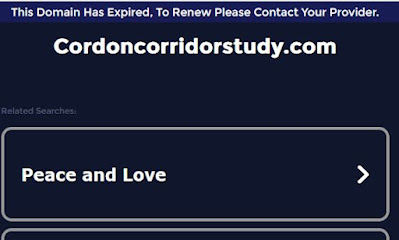The technical committee for our Metropolitan Planning Organization meets on Tuesday the 12th, and while there's no specific action item to comment on here, a broader and freer "project roundtable" discussion is a good hook for a couple of comments.
 |
| A couple of "roundtable" items |
The Scenario Planning project has already garnered some informed concern about its methods and work products, chiefly that as it is currently organized here, it's not going to tell us anything we don't already know. A person with long experience generally and specific knowledge of the modeling package writes:
it is so high level ("strategic") that it largely tells us what we already know: our existing plans will fall far short of meeting GHG and VMT goals, and if we do lots of things differently (pricing, land use, investing in transportation options, driving cleaner cars, etc.) we can get at least close to those goals. This is pretty much what we learned more than a decade ago from the STS, Metro's "Climate Smart" plan and efforts by a couple of other MPOs. What scenario planning leaves unanswered - and puts off to some future process - is proposing and evaluating ways that we might actually double or triple non-auto mode share or actually plan for 30% of all housing in climate friendly areas.
For example, instead of just assuming a particular amount of mixed use development (an input to the VisionEval model), the city should identify specific areas, including the proposed CFAs as areas that are planned for walkable, mixed use development. Similarly, instead of just assuming an increase in revenue hours of transit service (another VisionEval model input) identify specific routes where high levels of service would be provided - such as 10 minute peak hour service on several of the core transit network routes. And, for bike and pedestrian travel identify a set of actions that could reasonably be expected to support doubling or tripling the share of bike and pedestrian trips made throughout the city. (Again, in VisionEval this is an input assumption.) In short, the city should translate the VisionEval assumptions about levels of effort into specific proposals for changes to land use and transportation plans, policies and programs that could be expected to achieve these outcomes. [italics added]
Will the Scenario Planning be much more than wishcasting?
Our Climate Action Plan has struggled so far to escape wishcasting. The Scenario Planning Work Plan also struggles. When we brag about lane miles of bike lane, but do not also report on actual numbers of bike trips, on the behavior that actually reduces emissions, we are are measuring hopes and possibility rather than actual change to travel behavior. This goes on in variable after variable. |
| This measures hope and possibility only (Final Work Plan, Feb. 2024) |
There's an element of performance and greenwash untethered from real change here.
 |
| It's gone now, bye-bye |
Also on the roundtable list is the Cordon-Kuebler Corridor Study. Not only have they never published the final recommendations, the project page has disappeared.
 |
| Not updated and with a dead link at SKATS |
The project page was a County matter hosted by the consultant, DKS. At the website of the MPO itself, the discussion of the study hasn't been updated since late last summer.
This is an usually thin amount of attention and documentation on a large transportation planning study.
The Technical Advisory Committee meets on Tuesday the 12th at 1:30pm. The agenda, packet, and meeting information is here.


1 comment:
Marion County recently posted the Cordon-Kuebler Corridor Study plan (and an appendix) to their webpage under Transportation Plans:
https://www.co.marion.or.us/PW/Engineering/Pages/default.aspx
Adoption is planned for summer 2024.
I'll update the SKATS page with this info
Ray
MWVCOG/SKATS
Post a Comment